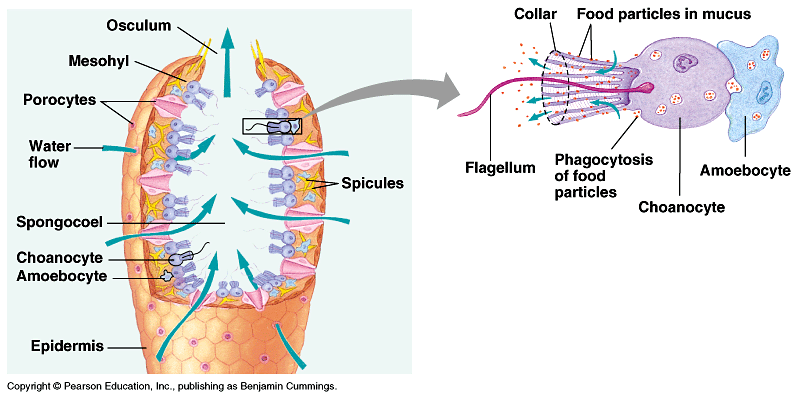


Whereas pinacocytes line the outside of the sponge, choanocytes tend to line certain inner portions of the sponge body that surround the mesohyl. In other sponges, ostia are formed by folds in the body wall of the sponge.Ĭhoanocytes (“collar cells”) are present at various locations, depending on the type of sponge however, they always line the inner portions of some space through which water flows: the spongocoel in simple sponges canals within the body wall in more complex sponges and chambers scattered throughout the body in the most complex sponges. In some sponges, ostia are formed by porocytes: single, tube-shaped cells that act as valves to regulate the flow of water into the spongocoel. In addition to the osculum, sponges have multiple pores called ostia on their bodies that allow water to enter the sponge.

The gel-like consistency of mesohyl acts as an endoskeleton, maintaining the tubular morphology of sponges. Mesohyl is an extracellular matrix consisting of a collagen -like gel with suspended cells that perform various functions. Pinacocytes, which are epithelial-like cells, form the outermost layer of sponges, enclosing a jelly-like substance called mesohyl. While sponges (excluding the Hexactinellids) do not exhibit tissue-layer organization, they do have different cell types that perform distinct functions. The specialized cell types in sponges (b) each perform a distinct function. \( \newcommand\): Sponge morphology: The sponge’s (a) basic body plan is a cylinder shape with a large central cavity.


 0 kommentar(er)
0 kommentar(er)
